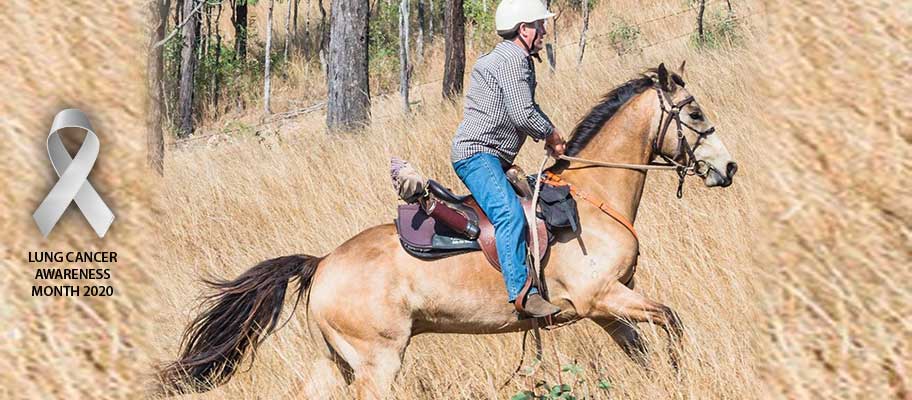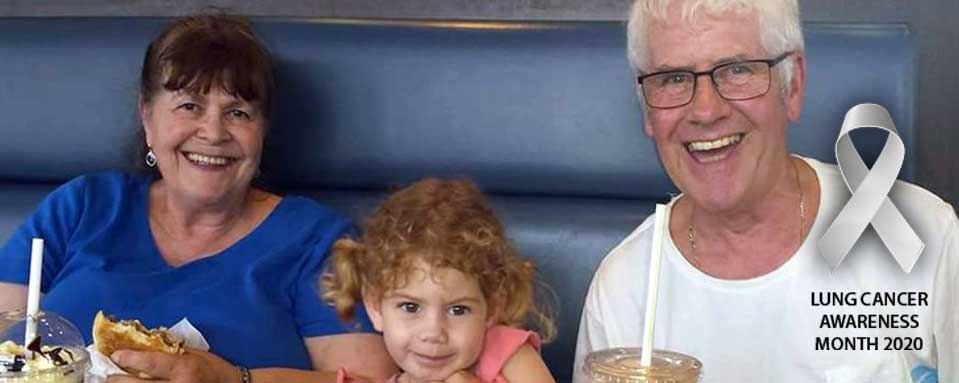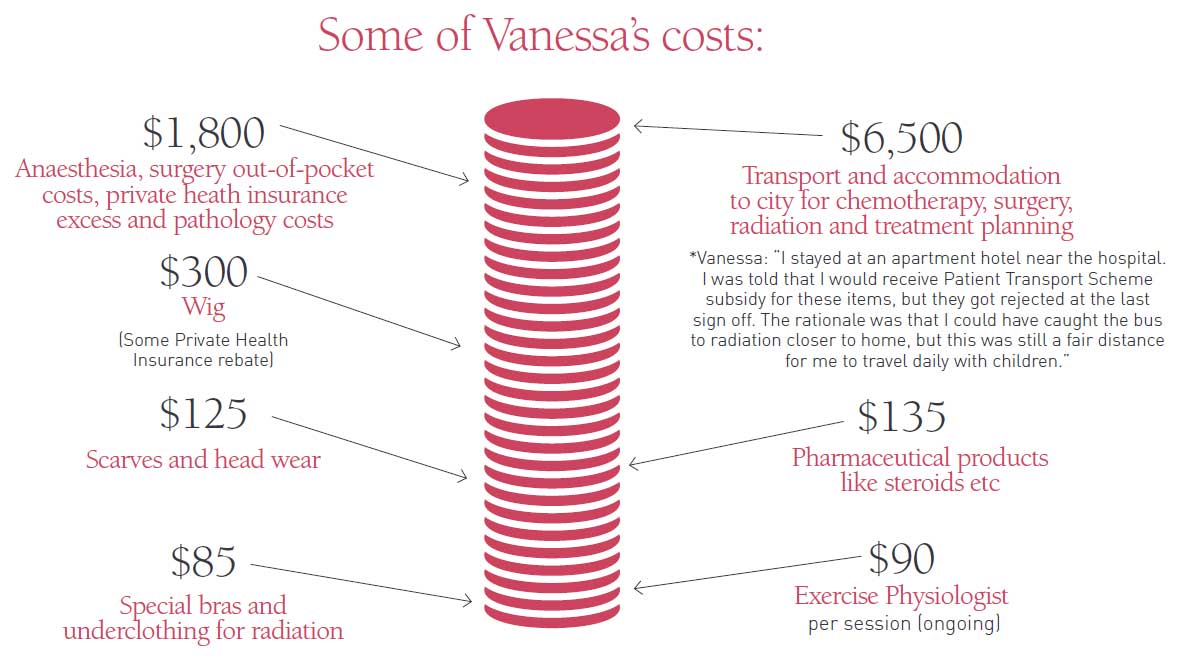
The following article features in Issue One of the ST BREAST magazine.
WHY EXERCISE IS VITAL BEFORE, DURING AND AFTER BREAST CANCER
Dale Ischia is an accredited exercise physiologist and a cancer exercise specialist. She says it’s now “beyond doubt” that exercise is vital before, during and after a breast cancer diagnosis, with the benefits not only physical.
“Exercise can improve mood, symptoms of depression and also have an impact on the body’s immune system and chances of overall survival,” 1,2 Dale says.
“The benefits of exercise in cancer are so widely supported that it is now recommended by the Clinical Oncology Society of Australia that exercise be a part of everyone’s cancer care. Patients should remember that 12 weeks of chemotherapy creates a decline in cardiovascular fitness typically only seen in a decade of ageing.3
It is a perfect storm of deconditioning. Combine the cancer itself with chemotherapy and hormonal treatment and you have this rapid ageing process.”
The good news is, that exercise can slow, prevent or even reverse this deconditioning process. A major US study in 2014 showed that some cancer patients were actually able to increase their cardiovascular fitness by 13.3% when prescribed a specific program of interval training, that allowed for treatment fluctuations and was appropriately progressed.4
Another study examined 50,000 cancer survivors. It found that those who were physically active after their diagnosis had a 48% greater chance of overall survival and an 28% greater chance of breast cancer survival.2, 5
“We do know exercise works,” Dale says. “I would encourage all women who face this diagnosis to start moving – start small and build up – it is never too late. And we can help you. If a woman doesn’t know where to begin, she should consult an accredited exercise specialist and we will help. It might be as simple as starting with a walk. The important thing is to keep moving.” We asked Dale to address some commonly asked questions about exercise and breast cancer.
How can exercise help manage the side effects of breast cancer treatment?
- Improves muscle tone and helps to combat loss of strength
- Protects bones
- Fights fatigue
- Improves balance
- Improves cardiovascular fitness
- Restores range of movement in the shoulder
- Helps manage peripheral neuropathy
Not only does it help with the side-effects of breast cancer treatment, exercise also:
- Improves the efficacy of chemotherapy
- Improves the chance of overall survival
- Boosts the body’s own immune function
What sorts of exercise are best? Is walking enough?
It is best to use a combination of cardiovascular, strength, flexibility, balance, core and repetitive movements. For cardiovascular fitness, we recommend things like walking, running, swimming, dancing or hiking.
A minimum of 90 minutes per week is the basic recommendation. That is, three thirty-minute sessions working at moderate intensity. This will benefit body composition, cardiovascular fitness, and heart health. You may have to build up to this gradually, or split this up into 10-minute blocks throughout the day.
Walking outside is one of the simplest exercises you can do. It gets you in the fresh air, is free, can be done anytime and helps your cardiovascular system and the health of your mind.
What’s your definition of moderate intensity exercise?
Moderate exercise is when your heart is working at 55-70% of its maximum rate. To work this out, minus your age from 220. You can also do a ‘talk test’. Your breathing rate should be such that you can talk, but not sing.
Why do you recommend strength training?
Strength training exercises improve both your strength and your muscle mass. We know that muscle mass is a good indicator of survival, so the more muscle mass the better. Strength training exercises have also been proven to stop the bone loss that occurs in hormone treatment.
Strength exercises might use someone’s own body weight, free weights, and machine weights.
Please note though, if you have recently had surgery, you must get the okay from your surgeon before lifting heavy weights. I would say to women to make sure they have a full range of movement in their arm and shoulder before performing certain resistance training exercises.
You need two to three 30-minute sessions per week. You should start with fairly light weights and progress slowly. A 20 percent increase every couple of weeks is a good guide. Begin with one set of 10 to 12 repetitions of eight different strength-training exercises using major muscle groups and multi joint functional exercises. When you are stronger, you can progress to doing 2 to 3 sets of 6 to 10 repetitions with an increased load.
Can women exercise during chemotherapy?
Exercise is safe during chemotherapy. Energy levels fluctuate throughout the cycles of chemotherapy. There are going to be days when you just can’t face it, and other days when you are feeling better. An Exercise Physiologist can prescribe you an exercise program that includes exercises for what we call good days, flat days and no-way days.
A flat day program might involve a small series of exercises sitting or lying down. It may be enough to just walk to the letter box and back. Keep it simple, but keep moving.
What if I am just too tired?
Rest and recovery are just as important as exercise. Mid-afternoon is a great time to lay down. If you fall asleep, great, if not, enjoy the rest. Limiting a mid-afternoon nap to 45 minutes should ensure you are not negatively impacting your evening sleep.
Work out the time of day when you are least fatigued – typically this is mid-morning and you should exercise then. Often the hardest part is getting out the door or off the couch. Once you have started exercising you might feel more energised and completing the exercise is manageable.

What if I have a central port?
Once the central port has healed, there aren’t many limitations, except when it is attached to chemotherapy – please speak with your nurse, exercise physiologist or oncologist. Be guided by your own perceived rate of exertion.
What about after surgery? Is exercise recommended? Can it hurt healing mastectomy sites?
Immediately after surgery, it is important to move around gently to reduce the likelihood of a blood clot, or deep-vein thrombosis (DVT). Walking is best, however, simply pointing and flexing your feet can help pump blood around. Once cleared by the surgeon (usually after 6 weeks) you can gradually increase range of movement exercises and resistance exercises and increase walking. Doing this under the guidance of your exercise physiologist or physiotherapist is best. If there is unusual swelling at the operation site, please refer to the doctor and do not continue with exercise. If time allows, it is helpful to get as fit as you can prior to surgery.
What about lymphoedema?
Many women are fearful of developing lymphoedema and often don’t want to lift anything heavier than the initial weight restriction given to them immediately after their operation.
The good news is, it is perfectly safe to lift very heavy loads, provided you gradually build up. Start low and progress slow when it comes to resistance training and lymphoedema.
Exercise can help move lymphatic fluid around the body, which can reduce swelling and symptoms, but it won’t cure lymphoedema. Repetitive movement for the arms is good for lymphatic flow, such as marching on the spot, wiggling the fingers, rowing or pole walking.
Why have I been told to do balance exercises?
Balance is commonly affected by chemotherapy, especially if you experience peripheral neuropathy or hair loss. Balance exercises, as their name implies, help to maintain balance, which is particularly important for those who are at risk of bone fractures from osteoporosis or bone metastases. Simple balance exercises such as standing on one leg will help challenge and maintain your balance. Core strengthening exercises are also vital, especially if breast reconstruction involves the abdominal muscle.
How can exercise improve chemotherapy benefit?
There have been some really exciting results published on how exercise increases the efficacy of chemotherapy in mice models. These results are extremely positive, however should be viewed with cautious optimism.
A study was undertaken where mice were injected with breast tumour cells. Tumours actually grew slower in those mice who ran on a treadmill everyday.6 Another study, which examined lung, melanoma and liver cells in mice, showed a 60% reduction in tumour numbers and size in those running on a treadmill.
Immune cells released by the body during exercise slowed tumour growth. When these natural killer cells were blocked, the tumours grew at the normal rate.7 Studies in humans are currently underway. It is very important to seek the advice of an Accredited Exercise Physiologist with further training in oncology if any of the following are
present:
- Bone Metastases
- Lymphoedema
- PICC line
- Tendon issues
- Low WBC or RBC (White Blood Cells/Red Blood
Cells)
What else should patients be mindful of?
Take it easy
You may not be able to do what you used to be able to straight away, so build up gradually. Breast cancer patients also need to make sure they are absorbing enough nutrients to fuel an exercise program. They need enough fat, carbohydrates, proteins , vitamins and minerals.
Fatigue levels
These will fluctuate, especially during treatment. It’s important to move, but not to move until you are exhausted. Exercise to tolerance and monitor recovery.
Avoid guarding behaviour
Rounding your shoulders and not moving the arm on the affected side can lead to shoulder impingement syndrome or frozen shoulder.
Infection
If your neutrophil levels are low, you should avoid public places with high risk of infection, like public swimming pools.
Anaemia
This is self limiting. You will not be able to push yourself to exercise.
Peripheral Neuropathy
This is a common side effect of chemotherapy. It will not be worsened by exercise. It can reduce your balance, especially your proprioception (sense of movement and body position), so it is important to minimise tripping hazards. Moving your feet and hands can help with your proprioception. Massage can also help reduce the feeling that your foot is one block, and make it feel like individual bones and joints again.
Cramps
These may be a sign of something else and you should check with your doctor. Cramps can be common and are best managed by hydration (drinking 1.5-2.5 litres of water per day), stretching the affected area, and good nutrition. A healthy diet will provide all relevant nutrients. No supplements are required if your nutritional intake is sufficient.
When you should stop exercising and consult your doctor:
- If you experience dizziness or fainting while exercising
- If there is swelling in your ankles, neck, face or arms, seek immediate medical help
- If you experience shortness of breath with only a small amount of exertion
- If you have chest pain or palpitations
- If you become nauseous during exercise
- If you experience chills / shaking during exercise
- If you develop severe diarrhoea or vomiting.
- If you have a high temperature.
Dale Ischia
- Fairey AS, Courneya KS, Field CJ, Bell GJ, Jones LW, Mackey JR. Randomized controlled trial of exercise and blood immune function in postmenopausal breast cancer survivors. J Appl Physiol (1985). 2005;98(4):1534-40.
- Schmid D, Leitzmann MF. Association between physical activity and mortality among breast cancer and colorectal cancer survivors: a systematic review and meta-analysis. Annals of oncology : official journal of the European Society for Medical Oncology / ESMO. 2014.
- Lakoski SG, Barlow CE, Koelwyn GJ, Hornsby WE, Hernandez J, Defina LF, et al. The influence of adjuvant therapy on cardiorespiratory fitness in early-stage breast cancer seven years after diagnosis: the Cooper Center Longitudinal Study. Breast Cancer Res Treat. 2013;138(3):909-16.
- Hornsby WE, Douglas PS, West MJ, Kenjale AA, Lane AR, Schwitzer ER, et al. Safety and efficacy of aerobic training in operable breast cancer patients receiving neoadjuvant chemotherapy: a phase II randomized trial. Acta Oncol. 2014;53(1):65-74.
- Cormie P, Zopf EM, Zhang X, Schmitz KH. The Impact of Exercise on Cancer Mortality, Recurrence, and Treatment-Related Adverse Effects. Epidemiol Rev. 2017;39(1):71-92.
- Betof AS, Lascola CD, Weitzel D, Landon C, Scarbrough PM, Devi GR, et al. Modulation of murine breast tumor vascularity, hypoxia and chemotherapeutic response by exercise. J Natl Cancer Inst. 2015;107(5).
- Pedersen L, Idorn M, Olofsson GH, Lauenborg B, Nookaew I, Hansen RH, et al. Voluntary Running Suppresses Tumor Growth through Epinephrine- and IL-6-Dependent NK Cell Mobilization and Redistribution. Cell Metab. 2016;23(3):554-62.











